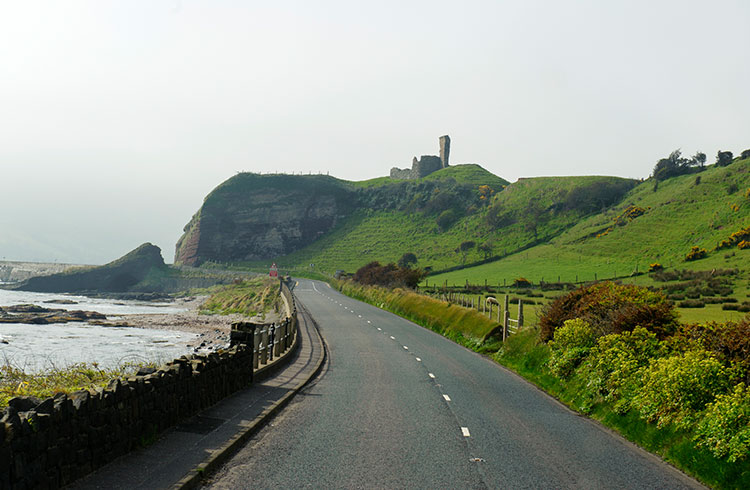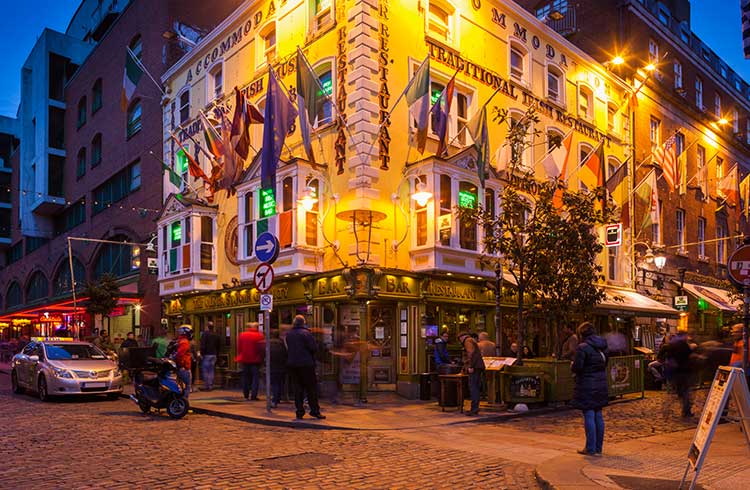Driving in Ireland: Tips & Advice for Safer Road Travel
Ronan O’Connell shares his tips on road-tripping safely around Ireland, from winding roads to misleading speed limits, here’s everything you need to know before you hop in your hire car.
 Photo © Getty Images/Feifei Cui-Paoluzzo
Photo © Getty Images/Feifei Cui-Paoluzzo
With plunging sea cliffs to my left and rolling green hills to my right, I’m finding it hard to concentrate on the curving road before me. It’s a problem I’ve faced often in my five years living on and off in Ireland – how not to get distracted by the startling beauty of this country’s untamed landscape while driving.
There is no better way to explore Ireland than by car. It’s so dense with history, scenery and picturesque towns that you will miss so much if you choose to travel by bus or train.
At first glance, Ireland’s road system and rules will look straightforward and familiar to drivers from Europe, Australia, the US and Canada. But there are many quirks to driving in Ireland which are not obvious for first-time visitors. Here are my tips for safe driving on your trip.
- Ireland’s roads can be treacherous
- Safety lanes are not safe at all
- Don’t touch your phone
- Google Maps can be your enemy
- Overtaking is dangerous
- Irish speed limits are misleading
- Road trips take longer than you expect
- Listen to The World Nomads Podcast episode on Ireland
Ireland’s roads can be treacherous
Many rural parts of Ireland can be only accessed via extremely narrow, winding and sometimes bumpy roads. A lot of the country roads that lead to small villages, beaches or national parks can be so narrow that two cars cannot pass each other. This requires one driver to reverse until they find somewhere they can pull in and get out of the way to make room for the other.
On occasion, you will turn a corner to find the road blocked by a slow-moving tractor or livestock being herded. When you then factor in wet roads from Ireland’s regular rain, this makes driving in the countryside unpredictable and quite dangerous.
Safety lanes are not safe at all
In most countries, the ‘safety’ or ‘breakdown’ lanes on the edge of a road are used by drivers who have a pressing reason to stop their vehicles, which means, these are safe places to pause in an emergency. Unfortunately, this is not the case in Ireland.
Here, many drivers use these lanes either to merge into traffic from a side road, or to move to one side to let vehicles overtake them. The frequent use of these side lanes by Irish drivers means you should avoid stopping in them whenever possible, even if your car is having a mechanical issue. Instead, try to find somewhere to park that is away from the road.
Don’t touch your phone
Using your phone while driving is a terrible idea, no matter which country you’re in, acting as a major distraction from the road. But Ireland takes this road safety issue particularly seriously. So seriously that you can be fined an incredible 1,000 Euros just for your first offense, which is significantly higher than the fines handed out for using your phone while driving in the UK, Australia, the US and Canada.
Google Maps can be your enemy
My Irish mother warned me to ignore Google Maps in Ireland. It wasn't until this app repeatedly sent me down impossibly-narrow back roads in the countryside that I heeded her advice.
In Ireland, Google Maps will often instruct you to take “shortcuts” via these back roads to avoid traffic on the main highways. It is a trap. These back roads are so narrow and winding, and the visibility so poor, that you must drive very slowly. They may be short in distance but they make for slow progress.
Stick to main roads where possible.
Overtaking is dangerous
Unlike where I grew up in Australia, Irish drivers routinely take the risk of overtaking multiple cars at once on the country's many single-carriageway roads.
This means that when you’re looking to overtake a vehicle you must check both ahead of you and behind you, to make sure nobody to your rear is trying to overtake two, three, four or even five vehicles in one go.
Irish speed limits are misleading
On Ireland’s narrow rural roads never assume it’s safe to drive at the sign-posted speed limit. If you do, you’ll soon end up in a ditch. While you might be used to signposts instructing you to slow down when you’re approaching a corner or a winding section of a road, in Ireland you’re often left to make up your own mind.
In the Irish countryside, I’ve often driven past a 50mph (80kmh) sign only to very soon encounter a sharp bend that can’t be negotiated safely at any faster than 25mph (40kmh). Irish drivers are familiar with this quirk, but for travelers, it can be disconcerting.
Road trips take longer than you expect
Ireland looks tiny on the map, particularly to people from larger countries like Australia, the US or Canada. Don’t be fooled. Ireland’s limited network of multiple-lane highways means progress is often much slower than you’d expect.
Particularly when you’re driving along or near the country’s gorgeous coast, where many of its most scenic locations are nestled, it’s not unusual for a 60mi (96km) trip to take close to two hours, even without any stops.
So, if you’re planning to drive all of “small” Ireland in just a few days, think again. Don’t try to cover too much ground in any one day or holiday. Take it slow and savor the scenery.
Listen to The World Nomads Podcast episode on Ireland
Related articles
Simple and flexible travel insurance
You can buy at home or while traveling, and claim online from anywhere in the world. With 150+ adventure activities covered and 24/7 emergency assistance.
Get a quote

No Comments